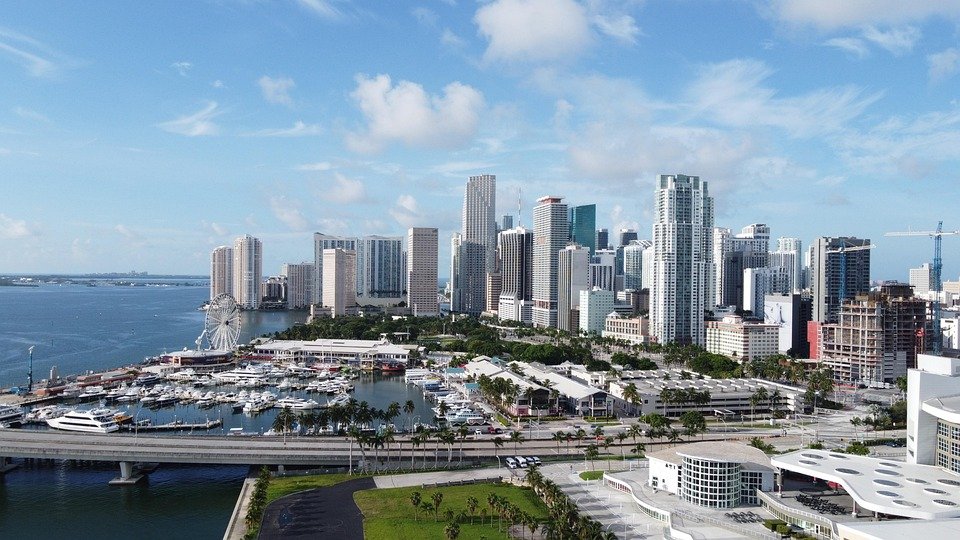Current Rental Trends in Miami Beach
Miami Beach is known for its vibrant lifestyle and stunning marina views, attracting many renters and homebuyers. In recent months, rental prices for one and two-bedroom apartments near Marina Bay have shown an upward trend, making it essential for prospective tenants to stay informed. Currently, one-bedroom rentals average around $2,500, while two-bedrooms can be found starting at approximately $3,500 per month, depending on the location and amenities.
Sales Prices for Apartments in the Area
If you’re looking to purchase property instead, the sales prices for one and two-bedroom apartments in Miami Beach also reflect a competitive market. Buyers can expect to pay approximately $400,000 for a one-bedroom and upwards of $600,000 for a two-bedroom unit. The demand for close proximity to Marina Bay significantly drives these prices, as residents enjoy quick access to waterfront activities and local attractions.
Finding the Best Deals
To secure the best possible prices for rentals and sales in Miami Beach, it’s advisable to work with a local real estate agent who can provide insights into the market. They can help you find hidden gems that meet your budget and lifestyle preferences. Additionally, keeping an eye on seasonal trends can aid in timing your search, as prices may fluctuate throughout the year. Whether you’re interested in renting or purchasing, there are options available that offer both comfort and convenience in the beautiful Miami Beach area.

Current Rental Trends in Miami Beach
Miami Beach has long been a sought-after destination for both tourists and residents alike, and current rental trends reflect the dynamic nature of this vibrant market. This area is characterized by seasonal fluctuations in rental prices, where demand peaks during winter months when tourists flock to the region. Consequently, the rental market experiences a surge, leading to higher prices for both short-term and long-term leases. During the off-peak months, typically from late spring to early fall, rental prices stabilize, providing opportunities for potential renters looking for more affordable options.
Popular neighborhoods such as South Beach, Mid-Beach, and North Beach consistently attract a diverse range of renters, including young professionals, families, and retirees. South Beach, known for its lively nightlife and beautiful ocean views, remains a favored choice despite generally higher rental costs. Conversely, Mid-Beach and North Beach offer a quieter atmosphere and more family-oriented amenities, appealing to those seeking a subdued environment while still enjoying proximity to the city’s attractions.
The impact of tourism on rental rates in Miami Beach cannot be overlooked. As visitors contribute significantly to the local economy, property owners and managers often adjust their rental pricing strategy accordingly. For instance, many landlords and property managers may opt for short-term rentals (such as Airbnb) during peak tourist seasons due to the potential for higher income compared to long-term leases. This trend can make it challenging for long-term renters, particularly when seeking properties during high-demand periods.
Current economic conditions, including inflation and rising interest rates, have also left their mark on the Miami Beach rental market. These factors influence renters’ budgets and housing availability, prompting many to seek shared living arrangements or smaller spaces. Understanding these trends is crucial for potential renters navigating the current Miami Beach rental landscape, as they will enable informed decisions in such a competitive market.
Sales Prices for Apartments in Miami Beach
The real estate market in Miami Beach has experienced significant fluctuations in apartment sales prices over recent years. As of 2023, the median sales price for apartments in the area has seen a notable increase, reflecting broader economic trends and heightened demand. In 2020, the median price hovered around $400,000, whereas by 2023, it has risen to approximately $500,000, indicating a robust market recovery post-pandemic.
A variety of factors contribute to these rising prices. Location remains one of the primary determinants, with waterfront properties and those in prime neighborhoods commanding higher premiums. Apartments closer to the beach typically exhibit a price per square foot that outpaces other areas of Miami Beach. Additionally, the size of the apartment plays a crucial role; larger units with more bedrooms and amenities tend to attract higher offers, particularly from families and long-term residents seeking spacious living options.
Amenities also impact sales prices significantly. Apartments within condominiums that offer pools, fitness centers, or concierge services generally list at higher prices compared to properties without such features. Buyers are increasingly willing to pay more for properties that provide a comprehensive lifestyle experience, reflecting shifting preferences towards luxury and convenience.
Furthermore, the overall market demand in Miami Beach has been influenced by demographic shifts, with many young professionals and retirees attracted to the vibrant lifestyle and climate. Economic factors, including interest rates and employment trends, also play a role in shaping buyer behavior and subsequently influencing sales prices. As the market continues to evolve, it is essential for potential buyers and investors to stay informed about these dynamics to navigate the complex landscape of real estate in Miami Beach.
Finding the Best Deals in Miami Beach Real Estate
When navigating the vibrant Miami Beach real estate market, prospective renters and buyers often seek the best deals possible. The key to unearthing these opportunities lies in thorough research and strategic negotiation. Understanding the local market trends is crucial, as fluctuations in supply and demand can significantly influence property prices. Regularly reviewing market listings, utilizing online real estate platforms, and analyzing recent sales data can provide valuable insights into the most advantageous times to purchase or rent.
Incorporating the expertise of local real estate agents can also enhance the search process. Agents have access to a wealth of information regarding current listings, neighborhood dynamics, and historical price trends. They can assist in identifying properties that may not be widely advertised, ultimately broadening the selection for buyers and renters. Engaging with an agent who has a deep understanding of the Miami Beach area will not only streamline the process but can also lead to better negotiating outcomes.
Effective negotiation is integral to securing favorable deals. Once a potential property has been identified, conducting a comparative market analysis can help determine a fair offer. This strategy involves evaluating similar properties in the area to justify pricing expectations. Additionally, being prepared to act quickly can significantly increase the chances of securing a preferred property, especially in a competitive market like Miami Beach.
However, it is essential to remain cautious throughout this process. Prospective buyers and renters should avoid common pitfalls such as overlooking hidden costs, failing to conduct proper inspections, or rushing into decisions without adequate research. Taking the time to evaluate the true value of a property and being mindful of additional expenses, such as maintenance fees and taxes, will contribute to making informed and advantageous choices in the Miami Beach real estate landscape.
Forecasting Future Real Estate Prices in Miami Beach
The Miami Beach real estate market has long been a focal point for investors and buyers alike, characterized by its dynamic nature and attractive coastal living. As of late 2023, various economic indicators and expert analyses suggest a few trends that may influence rental and sales prices in the foreseeable future. One primary factor affecting the market is the ongoing economic recovery following the pandemic, which has reinvigorated consumer confidence and bolstered purchasing power among potential buyers.
Furthermore, the influx of affluent residents seeking second homes or investment properties in Miami Beach continues to drive demand. The region has garnered attention from out-of-state buyers, particularly those fleeing higher taxes and living costs in states like New York and California. This heightened demand is likely to sustain upward pressure on both rental and sale prices.
Another significant economic indicator is the current interest rate environment. As central banks adjust their monetary policies in response to inflationary pressures, fluctuations in interest rates could significantly impact real estate affordability. A stabilization or drop in rates may encourage more buyers to enter the market, consequently driving prices higher. Conversely, if rates climb, buyers could be deterred, leading to a potential cooling of the market.
Additionally, ongoing developments in infrastructure and amenities within Miami Beach can shape the market landscape. Improved public transportation, enhanced public services, and the introduction of luxury retail spaces and dining options are likely to attract more residents and investors alike. Such enhancements could positively affect property values, reinforcing the desirability of the area.
In conclusion, the future of the Miami Beach real estate market appears promising, driven by economic recovery, demographic shifts, and infrastructural development. Potential investors should closely monitor these evolving trends to make informed decisions regarding rental and sales opportunities in this vibrant coastal community.

